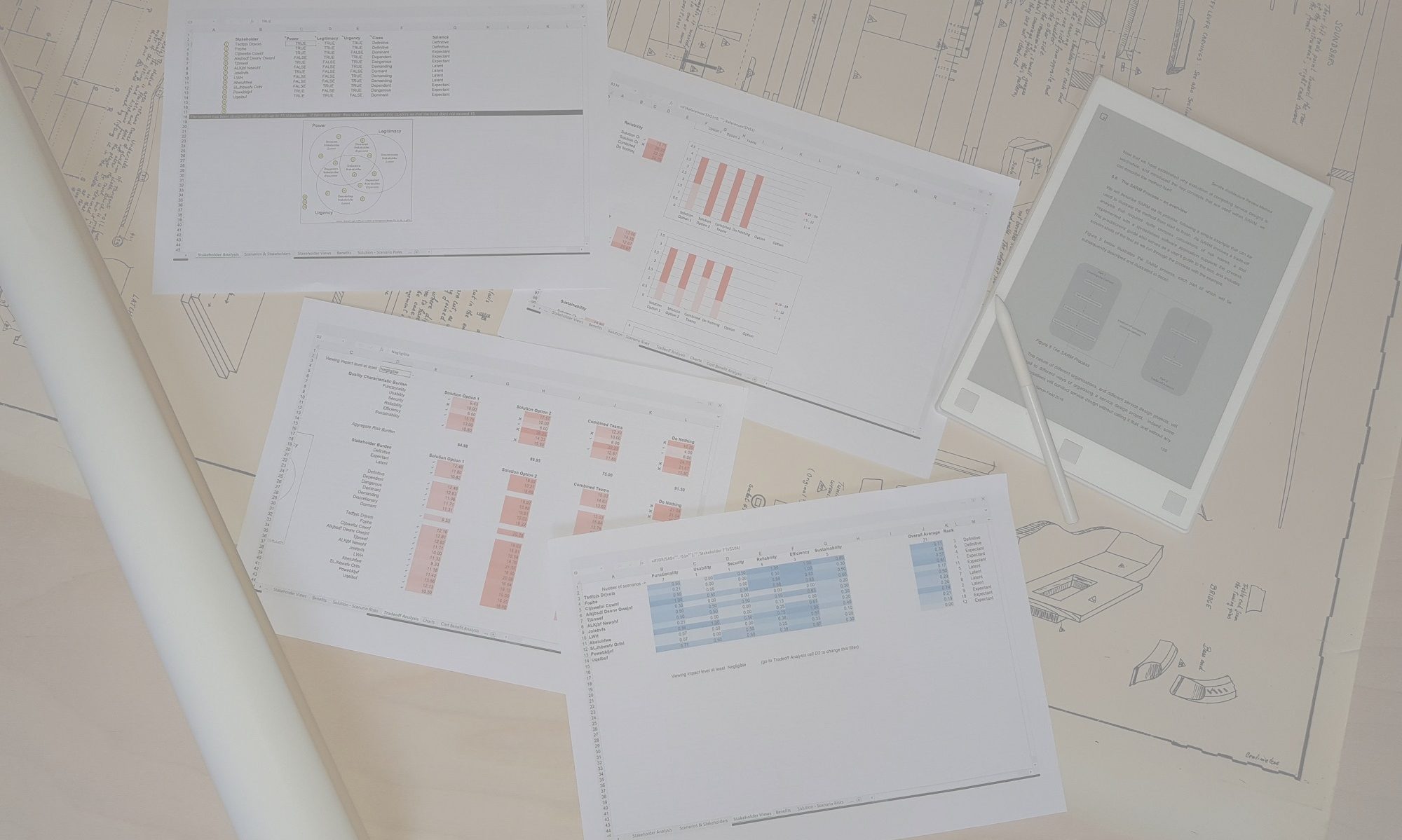The method involves a number of collaborative facilitated workshop. The first one identifies and classifies the stakeholders, the second one develops a set of scenarios that collectively describes what a good solution would look like, and the third conducts the trade-off analysis, exploring a set of solution options in the context that was developed in the first two workshops.
The first two workshops should ideally take place very early in the project, since they help to set the context for the project, its aims and objectives (what it is doing, and for whom). The third workshop takes place once the range of design options has been narrowed to a manageable number (typically less than six) that are well understood, but before the design team has settled on just a single solution. This workshop typically occupies the best part of a day and should involve a representative group of stakeholders (usually between ten and twenty in the review team).
Stakeholder analysis
A solution typically has multiple stakeholders; those responsible for its management and operation, its users, and others, for example those funding it, or those who are accountable for it. The stakeholders are identified and classified during the first workshop, and their interest in different aspects of the solution is documented, allowing the trade-off analysis that takes place later to view each solution option from the perspectives of the different stakeholders and types of stakeholder.
Quality characteristics and service requirements
A standard solution quality model is used to create a consistent context for the analysis, and to ensure that all aspects of solutions and their desired characteristics are examined. This is easy to adopt and allows the solution requirements to be explored from the perspectives of different quality characteristics, such as Functionality and Efficiency. The early development of scenarios using the model in the second workshop may trigger a reconsideration of project requirements, since it can help to identify gaps in the set of requirements identified as part of business analysis activities. The scenarios, which are related directly to the quality model, combined with the stakeholder analysis, will form the basis of the risk trade-off analysis which is conducted by the review team during the third workshop.
Cost Benefit analysis
If the team is able to quantify benefits, these can be ahead of the third workshop so that a Cost Benefit analysis can be presented during that workshop for each solution option under consideration. If a detailed analysis of benefits has taken place, the benefits can be assigned to individual scenarios. If only high-level total benefits can be articulated, the system can assist in apportioning benefits to scenarios. With this information, the third workshop can consider value for money alongside architectural fit during the third workshop.

